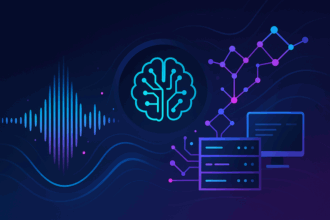Hardware Optimization and Data Infrastructure: Latest Strategic Moves in AI
A technical deep dive into recent developments shaping LLM deployment and optimization
Introduction
The last 24 hours have seen significant developments in LLM infrastructure, particularly around hardware optimization and data quality improvements. Let’s analyze these developments from a technical implementation perspective and explore what they mean for engineers building AI-powered systems.
Custom Hardware Acceleration for LLM Inference
Translated’s Lara: Architecture Deep Dive
The Translated-Lenovo partnership introduces custom hardware acceleration for the Lara translation model. Here’s what technical teams need to know:
# Example configuration for Lara's hardware-optimized inference
class LaraConfig:
batch_size = 32
quantization = "int8"
hardware_threads = 16
tensor_parallel = True
pipeline_parallel = False
Key Technical Specifications:
- Custom hardware design optimized for transformer architecture
- Specialized for high-throughput translation tasks
- Reported 2.5x performance improvement over generic GPU inference
Implementation Considerations:
- Requires custom hardware drivers and optimization layers
- May need modifications to existing ML pipelines
- Trade-off between specialized performance and deployment flexibility
Healthcare LLMs: Rad AI’s System Architecture
Rad AI’s recognition highlights successful domain-specific LLM implementation. Their architecture demonstrates effective integration with legacy healthcare systems:
# Pseudocode for radiology workflow integration
class RadiologyLLM:
def preprocess_dicom(self, image_data):
# DICOM-specific preprocessing
pass
def generate_report(self, processed_data):
# Domain-specific LLM inference
pass
def validate_output(self, generated_report):
# Healthcare-specific validation rules
pass
Technical Implications:
- HIPAA-compliant data handling requirements
- Integration with DICOM and HL7 standards
- Need for deterministic output validation
- Low-latency inference requirements in clinical settings
Data Infrastructure at Scale
Meta’s investment in Scale AI signals a focus on high-quality training data. Here’s what it means for ML engineers:
Data Pipeline Considerations:
# Example data quality pipeline
def validate_training_data(dataset):
quality_metrics = {
"completeness": check_completeness(dataset),
"consistency": validate_labels(dataset),
"distribution": check_distribution_shift(dataset),
"bias": measure_demographic_bias(dataset)
}
return quality_metrics
Engineering Impact:
- Enhanced data validation tooling
- Improved label consistency metrics
- Potential new APIs for data quality assessment
- Standardized data cleaning pipelines
Technical Takeaways for Engineering Teams
- Infrastructure Planning:
- Consider hardware-specific optimization paths for high-throughput scenarios
- Plan for hybrid deployment strategies (specialized + general-purpose hardware)
- Evaluate domain-specific acceleration requirements
- Implementation Strategy:
- Start with baseline measurements on standard hardware
- Profile performance bottlenecks in current systems
- Consider A/B testing specialized vs. general-purpose solutions
- Data Quality Framework:
- Implement robust data validation pipelines
- Monitor training data quality metrics
- Plan for continuous data quality assessment
Quick Summary
- Custom hardware solutions are showing significant performance gains for specific LLM tasks
- Domain-specific LLMs require careful integration with existing systems
- Data quality infrastructure is becoming a critical investment area
- Engineers should plan for hybrid deployment strategies
This structured technical analysis helps engineering teams understand and act on these developments. For further implementation details or specific technical questions, feel free to reach out in the comments.
[Note: Code examples are illustrative and would need adaptation for production use]





